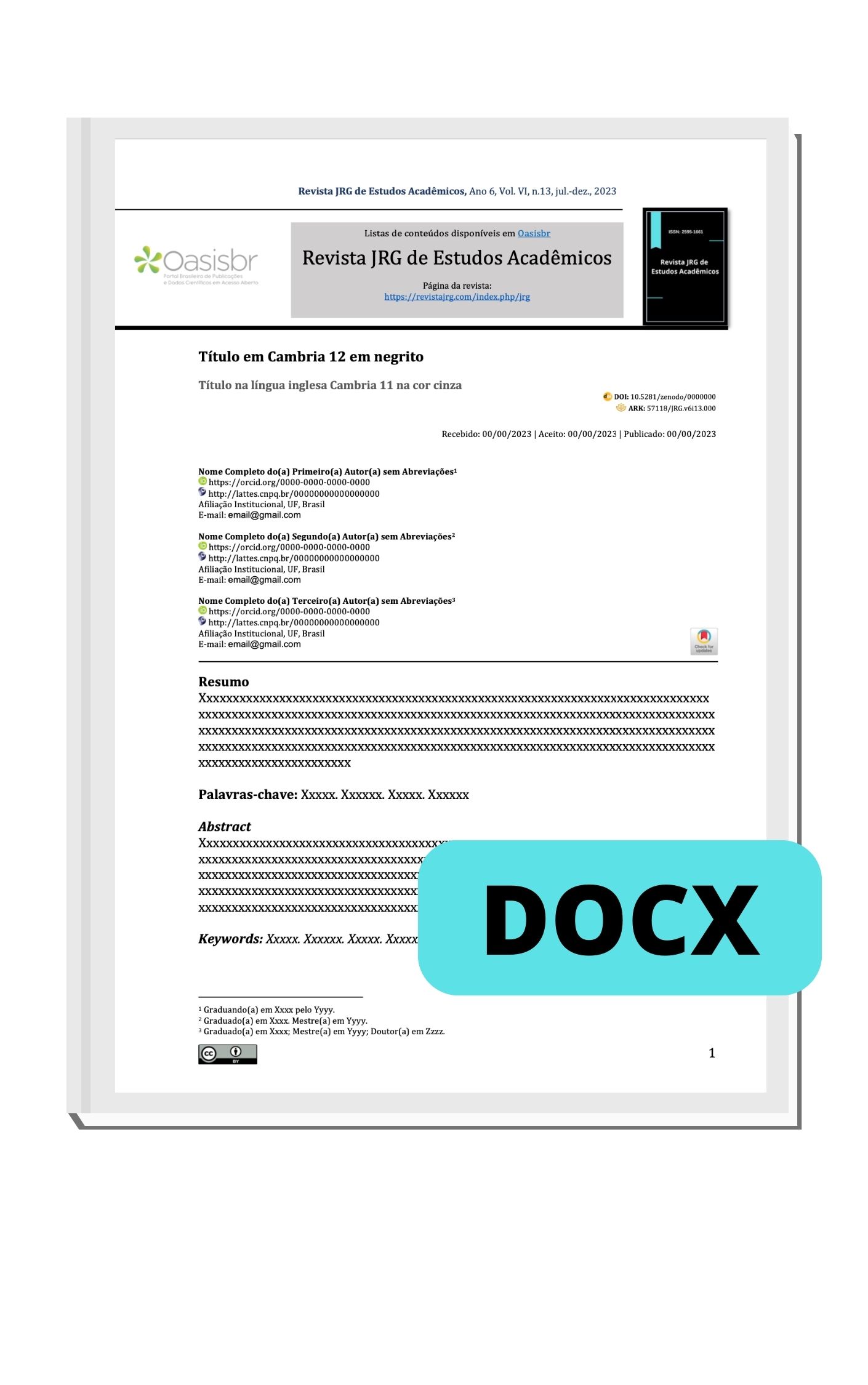Use of lactate in hemodynamic monitoring of critically ill patients in the Intensive Care Unit
DOI:
https://doi.org/10.55892/jrg.v7i14.933Keywords:
Lactic Acid, Hemodynamic Monitoring, Intensive Care UnitAbstract
Haemodynamic monitoring is a central pillar of intensive care. Haemodynamic variables are commonly checked at the bedside, such as heart rate, blood pressure and capillary refill time. Among the haemodynamic monitoring variables, lactate can be useful in the intensive care setting. Increased lactate is traditionally associated with tissue hypoxia, confirmed by clinical studies, which have shown a relationship between increased lactate and reduced tissue oxygen supply (DO2). However, mechanisms other than tissue hypoxia can also trigger an increase in lactate. Lactate can be used as a prognostic marker, since a reduction in lactate in patients with shock has been associated with less organ dysfunction, shorter duration of mechanical ventilation and ICU stay, and reduced mortality. However, the use of lactate clarification should be used with caution as it can cause harm to patients.
Downloads
References
ALMENOFF, P. L. et al. Prolongation of the half-life of lactate after maximal exercise in patients with hepatic dysfunction. Critical Care Medicine, 1989. v. 17, n. 9. Disponível em: <https://journals.lww.com/ccmjournal/fulltext/1989/09000/prolongation_of_the_half_life_of_lactate_after.4.aspx>.
ANDERSEN, O. et al. Preanalytical handling of samples for measurement of plasma lactate in HIV patients. Scandinavian Journal of Clinical and Laboratory Investigation, 2003. v. 63, n. 6, p. 449–454. Disponível em: <https://www.tandfonline.com/doi/abs/10.1080/00365510310005128>. Acesso em: 17 jan. 2024.
BACKER, D. DE et al. The effects of dobutamine on microcirculatory alterations in patients with septic shock are independent of its systemic effects. Critical Care Medicine, 2006. v. 34, n. 2, p. 403–408. Disponível em: <https://journals.lww.com/ccmjournal/fulltext/2006/02000/the_effects_of_dobutamine_on_microcirculatory.18.aspx>. Acesso em: 17 jan. 2024.
BAKKER, J. et al. Serial blood lactate levels can predict the development of multiple organ failure following septic shock. American Journal of Surgery, 1 fev. 1996. v. 171, n. 2, p. 221–226. Disponível em: <http://www.americanjournalofsurgery.com/article/S0002961097895529/fulltext>. Acesso em: 17 jan. 2024.
BAKKER, J.; NIJSTEN, W. N.; JANSEN, T. C. Clinical use of lactate monitoring in critically ill patients. 2013. Disponível em: <http://www.annalsofintensivecare.com/content/3/1/12>. Acesso em: 17 jan. 2024.
BAKKER, J.; VINCENT, J. L. The oxygen supply dependency phenomenon is associated with increased blood lactate levels. Journal of Critical Care, 1 set. 1991. v. 6, n. 3, p. 152–159.
DARDARI, H.; GARCIA, R.; MORINI, B. Effect of intravenous lactated Ringer’s solution infusion on the circulating lactate concentration: Part 3. Results of a prospective, randomized, double-blind, placebo-controlled trial. Crit Care Med. 1997;3(11):1851–1854.
EVANS, L. et al. Campanha de Sobrevivência à Sepse: Diretrizes Internacionais para o Manejo da Sepse e Choque Séptico 2021. [S.l.]: [s.n.], 2021. V. 49.
HERNANDEZ, G. et al. The holistic view on perfusion monitoring in septic shock. Current Opinion in Critical Care, jun. 2012. v. 18, n. 3, p. 280–286. Disponível em: <https://journals.lww.com/co-criticalcare/fulltext/2012/06000/the_holistic_view_on_perfusion_monitoring_in.12.aspx>. Acesso em: 17 jan. 2024.
JAMES, J. H. et al. Lactate is an unreliable indicator of tissue hypoxia in injury or sepsis. Lancet, 7 ago. 1999. v. 354, n. 9177, p. 505–508. Disponível em: <http://www.thelancet.com/article/S0140673698911321/fulltext>. Acesso em: 18 jan. 2024.
JANSEN, T. C.; BOMMEL, J. VAN; BAKKER, J. Blood lactate monitoring in critically ill patients: A systematic health technology assessment. Critical Care Medicine, 2009. v. 37, n. 10, p. 2827–2839.
JANSEN, T. C. et al. Association between blood lactate levels, Sequential Organ Failure Assessment subscores, and 28-day mortality during early and late intensive care unit stay: A retrospective observational study. Critical Care Medicine, 2009. v. 37, n. 8, p. 2369–2374. Disponível em: <https://journals.lww.com/ccmjournal/fulltext/2009/08000/association_between_blood_lactate_levels,.7.aspx>. Acesso em: 17 jan. 2024.
JANSEN, T. C. et al. Early Lactate-Guided Therapy in Intensive Care Unit Patients. https://doi.org/10.1164/rccm.200912-1918OC, 20 dez. 2012. v. 182, n. 6, p. 752–761.
KATTAN, E. et al. A lactate-targeted resuscitation strategy may be associated with higher mortality in patients with septic shock and normal capillary refill time: a post hoc analysis of the ANDROMEDA-SHOCK study. Annals of Intensive Care, 1 dez. 2020. v. 10, n. 1, p. 114. Disponível em: . Acesso em: 17 jan. 2024.
LEVRAUT, J. et al. Mild Hyperlactatemia in Stable Septic Patients Is Due to Impaired Lactate Clearance Rather Than Overproduction. https://doi.org/10.1164/ajrccm.157.4.9705037, 14 dez. 2012. v. 157, n. 4 PART I, p. 1021–1026.
NICHOL, A. D. et al. Relative hyperlactatemia and hospital mortality in critically ill patients: a retrospective multi-centre study. England: Critical care (London, England), 2010. v. 14, n. 1, p. R25.
NOORDALLY, O.; VINCENT, J. L. Evaluation of a new, rapid lactate analyzer in critical care. Intensive Care Medicine, 1999. v. 25, n. 5, p. 508–513. Disponível em: <https://link.springer.com/article/10.1007/s001340050889>. Acesso em: 17 jan. 2024.
PAN, J. et al. Relative efficacy and safety of early lactate clearance-guided therapy resuscitation in patients with sepsis: A meta-analysis. United States: Medicine, fev. 2019. v. 98, n. 8, p. e14453.
PINSKY, M. R. et al. Effective hemodynamic monitoring. Critical Care, 1 dez. 2022. v. 26, n. 1. Disponível em: . Acesso em: 17 jan. 2024.
PINSKY, M. R.; PAYEN, D. Functional hemodynamic monitoring. Critical Care, dez. 2005. v. 9, n. 6, p. 566. Disponível em: . Acesso em: 17 jan. 2024.
RONCO, J. J. et al. Identification of the Critical Oxygen Delivery for Anaerobic Metabolism in Critically III Septic and Nonseptic Humans. JAMA, 13 out. 1993. v. 270, n. 14, p. 1724–1730. Disponível em: <https://jamanetwork.com/journals/jama/fullarticle/408786>. Acesso em: 17 jan. 2024.
SAUGEL, B.; VINCENT, J. L. Cardiac output monitoring: How to choose the optimal method for the individual patient. Current Opinion in Critical Care, 1 jun. 2018. v. 24, n. 3, p. 165–172. Disponível em: <https://journals.lww.com/co-criticalcare/fulltext/2018/06000/cardiac_output_monitoring__how_to_choose_the.7.aspx>. Acesso em: 17 jan. 2024.
SINGER, M. et al. The Third International Consensus Definitions for Sepsis and Septic Shock (Sepsis-3). United States: JAMA, fev. 2016. v. 315, n. 8, p. 801–810.
VARY, T. C. Sepsis-induced alterations in pyruvate dehydrogenase complex activity in rat skeletal muscle: effects on plasma lactate. Shock, 1996. v. 6, n. 2. Disponível em: <https://journals.lww.com/shockjournal/fulltext/1996/08000/sepsis_induced_alterations_in_pyruvate.2.aspx>.
WOZNICA, E. A. et al. Liver dysfunction in sepsis. Advances in Clinical and Experimental Medicine, 2018. v. 27, n. 4, p. 547–551.
ZITEK, T. et al. Does Intravenous Lactated Ringer’s Solution Raise Serum Lactate? Journal of Emergency Medicine, 1 set. 2018. v. 55, n. 3, p. 313–318. Disponível em: <http://www.jem-journal.com/article/S0736467918306024/fulltext>. Acesso em: 17 jan. 2024.











































